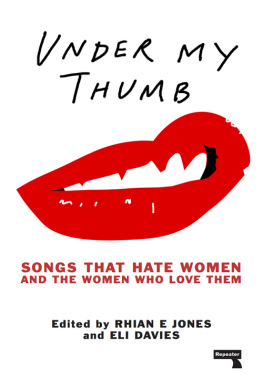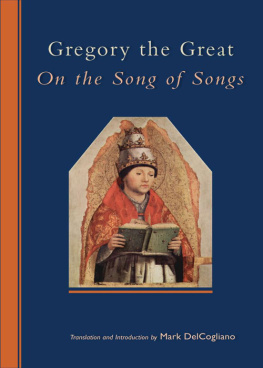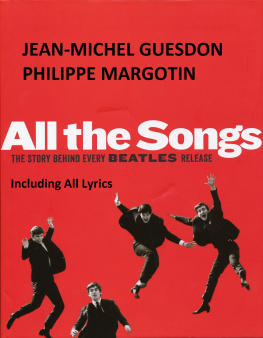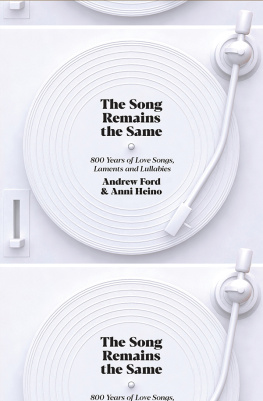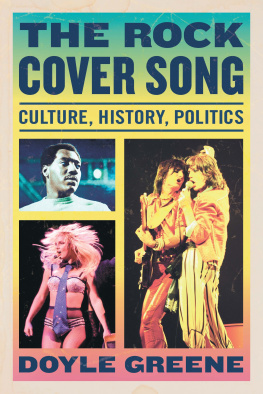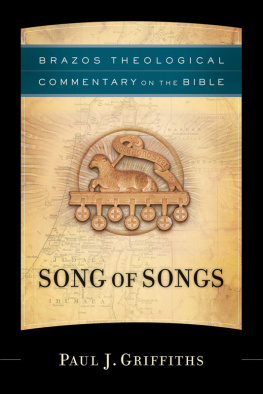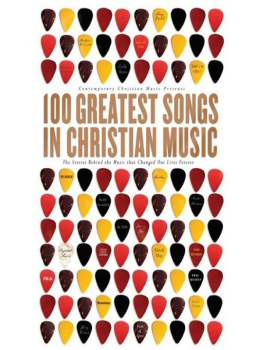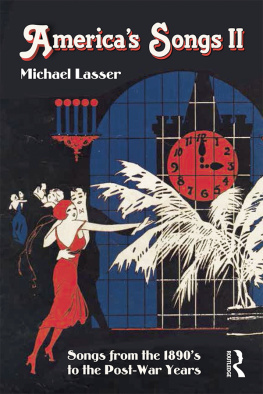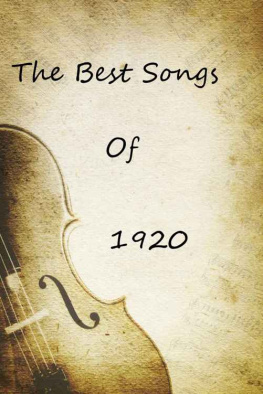Acknowledgments
First, Im grateful to Mary Francis and her incredible team at UC Press. They shepherded this book from initial draft to final manuscript with great care and efficiency.
Chapters 1 and 2 were drafted during a fellowship in residency at the Oregon Humanities Center. The OHC also provided a subvention for permissions and indexing, and I am grateful to Julia Heydon and the OHC staff for their support.
Chapters 3 and 4 began as dissertation chapters. Special thanks to my committee members Robert Fink, George Lipsitz, Susan McClary, and my advisor Robert Walser. Much of chapter 4 also appears in an article of the same name published in the Journal of the Society for American Music 3, no. 3 (Fall 2009): 34164.
A shout out to all who went above and beyond to offer their time and expertise. Thank you to the members of the Kosher Five (Steve Gordon, Bill Heller, and Richard Taninbaum) for their memories and sense of humor. Big ups to Michael Holman and Will Fulton for their respective insights about the old and new schools. Much respect to Ann Schafer for her sound advice, and to Bobby Chastain, Amy Lese, Bodie Pfost, Wesley Price, and Susanne Scheiblhofer for their able research assistance. Peace to Oliver Wang and Daniel Martinez HoSang for their constant support. Blessings to Felicia Miyakawa and Joseph Schloss for their feedback and encouragement. And everlasting gratitude to Charles Hiroshi Garrett, who generously responded to multiple drafts of the manuscript.
Colleagues, students, and staff in the University of Oregons School of Music and Dance have provided continuous support and inspiration. Im grateful to Brad Foley, Habib Iddrisu, Toby Koenigsberg, Phyllis Paul, Jeff Stolet, Chet Udell, and Ed Wolf for helping to make research and teaching about popular music a more central part of the schools mission. Ive also learned much from working with talented graduate and undergraduate students, especially Kai Finlayson, Eliot Grasso, Lauren Joiner, Aaron Manela, Nathan Moore, Marissa Ochsner, Brandon Parry, Sean Peterson, and Mark Samples. Special thanks to Lori Kruckenberg, Mark Levy, Anne Dhu McLucas, Marian Smith, and Marc Vanscheeuwijck for protecting the writing time of their junior colleague. I only wish I could share a copy of this book with Anne, who left us way too soon.
Ive also been kept afloat by the intellectual energy of colleagues across the University of Oregon campus. In particular, I have benefited from my associations with both the Ethnic Studies Department and the Folklore Program. Im indebted to Lynn Fujiwara for organizing a work-in-progress talk on behalf of this project, and to Joe Lowndes and Larry Wayte for serving as respondents. I also want to thank Kirby Brown, Mai-Lin Chang, Charise Cheney, Thea Chroman, John Fenn, Lisa Gilman, Ocean Howell, Brian Klopotek, Sharon Luk, Norma Martinez HoSang, Steve Morozumi, Priscilla Ovalle, Daniel Rosenberg, Ben Saunders, Carol Silverman, Will Terry, and Priscilla Yamin for their friendship and support.
Over the years, many others also have given freely of their time by answering queries and providing useful suggestions. They include Bill Adler, Phil Bedel, Jeff Chang, Dale Chapman, Shannon Dudley, Kevin Fellezs, Phillip Gentry, Suzie Gibbons, Daniel Goldmark, Roger Grant, Edwin Hill, Hua Hsu, Travis Jackson, Mark Katz, Eric Leeds, Brian McWhorter, Charlton Payne, Ben Piekut, Stephen Rodgers, Chris Shaw, Cecilia Sun, Justin Williams, Deborah Wong, Griffin Woodworth, and Christina Zanfagna. (I know I have forgotten more than a few names that deserve to be on this list. Please accept my humblest apologies if you are one of them.)
Thank you to my parents, Lloyd Kajikawa and Ronna Del Valle, and to my sister, Alisa Kajikawa, for their unconditional love and support. Thanks also to my extended family in the many clans branching out from the Kajikawa, Kurasaki, Mason, and Berry lines. Im also thankful for my found relations in the Del Valle, Rubinstein, Oshima, and Tanner families.
Im grateful for my children, Maya and Kenzo. Their silliness and lack of patience have helped to keep my priorities in line. I want to make it clear to them that the songs discussed in this book are historically important, but not necessarily my personal favorites. I much prefer hearing them reciting rhymes on the way to school, and I look forward to continuing their indoctrination in the music of Rakim, De La Soul, and many others. Finally, and most importantly, my wife Mika Tanner is not only the best live-in reader a scholar could ask for but also an inspiration to me as a writer, parent, and partner. She brightens my life with love and laughter, and I must have done something noble in a previous life to deserve her. Without her love and support there is no way this book could have been written.
Introduction
Sounding Race in Rap Songs
Do the Right Thing, director Spike Lees controversial 1989 film exploring simmering racial tensions in a Brooklyn neighborhood on the hottest day of the year, opens with actress Rosie Perez dancing to Public Enemys song Fight the Power. Framed by a series of urban backdrops representing the films Bedford-Stuyvesant setting, Perez performs a set of hip hopinspired dances as the credits play. Appearing in multiple costumes, including boxing trunks and gloves, she moves with an intensity that embodies the songs seriousness and righteous anger. Her kinetic narrative gives life to the words of the song, connecting her bodily gestures to rapper Chuck Ds lyrics and political sentiments. This bodymusic connection established in the opening sequence carries over to one of the films main characters, Radio Raheem, who, as his name suggests, always appears carrying a large boombox that plays nothing other than Fight the Power. Often filming Radio Raheem (played by actor Bill Nunn) from below and using wide angles to emphasize his large size, Lee portrays the young, muscular black man as a towering figure, and Public Enemys song becomes an audible manifestation of his imposing presence.


